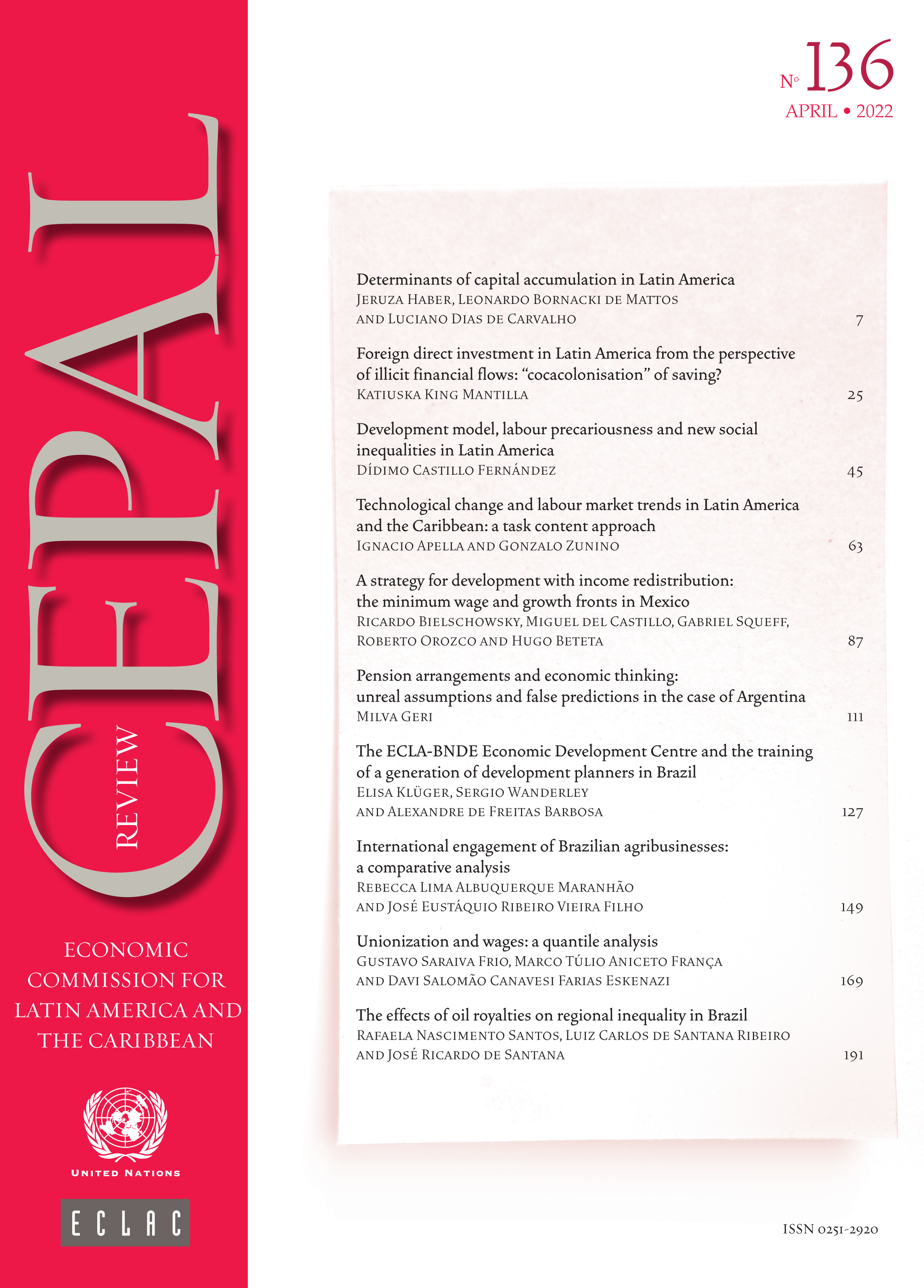-
Development model, labour precariousness and new social inequalities in Latin America
- Source: CEPAL Review, Volume 2022, Issue 136, Oct 2022, p. 45 - 61
- Spanish
-
- 24 Oct 2022
Abstract
This article analyses the key characteristics of the two major economic models of the last century, and of the current one thus far, in Latin America. The first is centred on national development, with a relative welfare structure. The second presents the distinctive features of the current neoliberal model, in terms of the breakdown of the social pact between capital, the State and the working class, together with flexibilization and deregulation as modalities of labour management. As a hypothesis, some of these singularities are analysed in terms of the emergence of a new labour precariousness and new income inequalities and poverty. The study considers the differences between countries that adopted the neoliberal model and those that chose post-neoliberal forms of governance. In all of the dimensions and variables considered, it is found that conditions were worse in the countries that followed the neoliberal model most closely.





